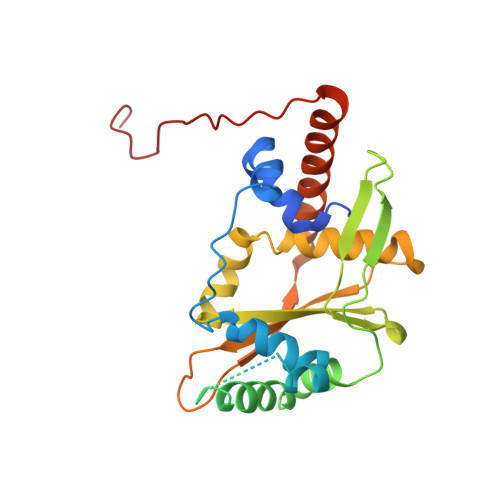Crystal structure of E. coli RecE protein reveals a toroidal tetramer for processing double-stranded DNA breaks.
Zhang, J., Xing, X., Herr, A.B., Bell, C.E.(2009) Structure 17: 690-702
- PubMed: 19446525
- DOI: https://doi.org/10.1016/j.str.2009.03.008
- Primary Citation of Related Structures:
3H4R - PubMed Abstract:
Escherichia coli RecE protein is part of the classical RecET recombination system that has recently been used in powerful new methods for genetic engineering. RecE binds to free double-stranded DNA (dsDNA) ends and processively digests the 5'-ended strand to form 5'-mononucleotides and a 3'-overhang that is a substrate for single strand annealing promoted by RecT. Here, we report the crystal structure of the C-terminal nuclease domain of RecE at 2.8 A resolution. RecE forms a toroidal tetramer with a central tapered channel that is wide enough to bind dsDNA at one end, but is partially plugged at the other end by the C-terminal segment of the protein. Four narrow tunnels, one within each subunit of the tetramer, lead from the central channel to the four active sites, which lie about 15 A from the channel. The structure, combined with mutational studies, suggests a mechanism in which dsDNA enters through the open end of the central channel, the 5'-ended strand passes through a tunnel to access one of the four active sites, and the 3'-ended strand passes through the plugged end of the channel at the back of the tetramer.
Organizational Affiliation:
Department of Molecular and Cellular Biochemistry, The Ohio State University College of Medicine, Columbus, OH 43210, USA.














